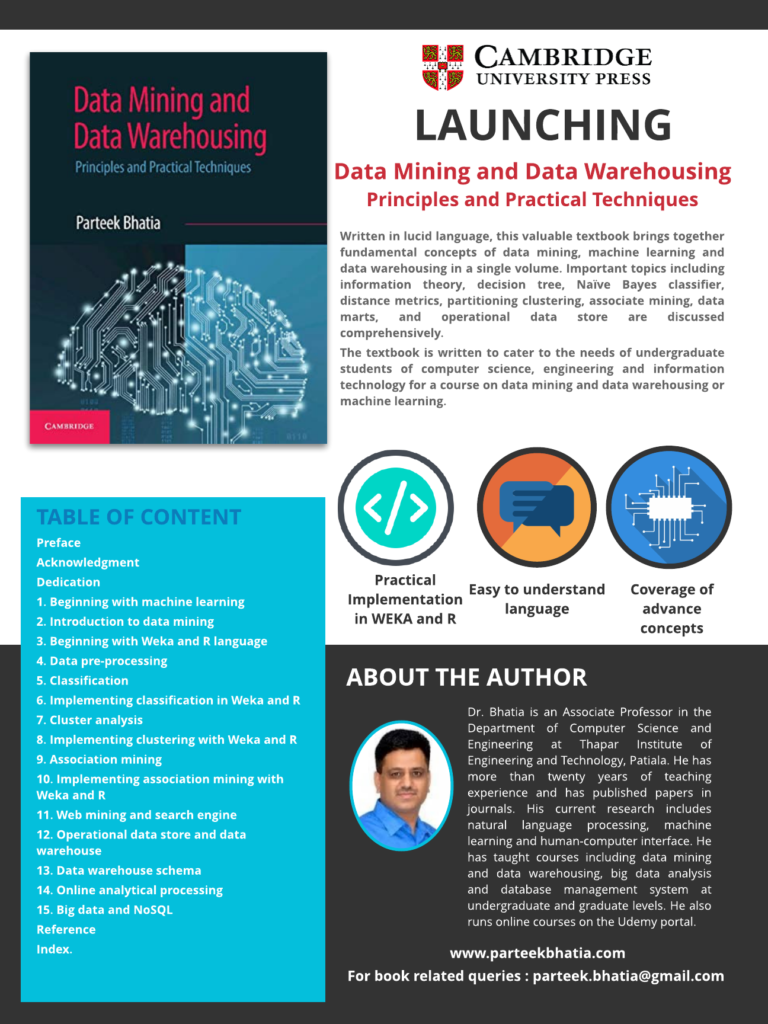Introduction to Machine Learning
•Machine learning is used by search engines such as Google and Bing to rank web pages.
•It is used by social networks such as Facebook and Instagram to generate a custom feed for every user.
•Email providers such as Gmail, Yahoo, and Hotmail use machine learning to decide which emails are spam and which are not.
The ultimate aim of machine learning is to build an Artificial Intelligence (AI) platform that is as intelligent as the human mind. We are not very far from this dream and many AI researchers believe that this goal can be achieved through machine learning algorithms that try to mimic the learning processes of a human brain.
Applications of Machine Learning
•Virtual Personal Assistants •Traffic Predictions •Online Transport Networks •Video Surveillance •Some media services •Email spam and malware filtering
• Online customer support • Medicine • Handwriting recognition • Machine Translation • Computational Biology and many more. • Driverless cars and autonomous helicopters
Machine Learning Definition
Definition # 1 Arthur Samuel (1959) coined the term machine learning and defined it as: ‘the field of study that gives computers the ability to learn without being explicitly programmed.’ This is an informal and old definition of machine learning.
Definition # 2 In 1998, Tom Mitchell redefined the concept of machine learning as ‘[A] computer program is said to learn from experience E with respect to some class of tasks T and performance measures P; if its performance at tasks in T, as measured by P, improves with experience E.’
Example: Let’s say there is an email program which tracks the emails that a person marks as spam or not spam and based on that learns how spam can be filtered in a better way. Thus, Classification of emails as spam or not spam is the Task T. Tracking the user and marking emails as spam or not spam becomes Experience E. The number of emails correctly classified as spam or not spam is Performance P.
Classification of ML Algorithms

1. Supervised learning
•Supervised learning problems are categorized into either ‘classification’ or ‘regression’ problems. • In a regression problem, we try to predict the results within a continuous output. This means that we try to map input variables to some continuous function. In a classification problem instead, we try to predict results in a discrete output. In other words, we try to map input variables into discrete classes or categories.
Example :
The prediction of marks of a student is a case of regression while prediction about his grades or division is classification. The prediction of a score in a cricket match is an example of regression while to predict if the team will win or lose the match is an example of classification.
2. Unsupervised learning
•Unsupervised learning, allows us to approach problems with little or no idea about what the results will look like. We can derive structure from data where we don’t necessarily know the effect of the variables. •In unsupervised learning data is not labeled, it means that there is no output attribute. We only have input attributes and on the basis of values of input attributes grouping or clustering is performed on the input data to group them into similar classes.
Example:
Google news as depicted in the Figure is an excellent example of clustering that uses unsupervised learning to group news items based on their contents.
3. Reinforcement Learning
•Reinforcement learning is used in applications like computer games (where the machine plays with a human), driverless cars, robot navigation, etc. It works through trial and error, and the machine selects those actions that yield the greatest rewards. These algorithms have three major components mentioned as follows.
•Agent: It is used for learning and decision making. The agent chooses actions that maximize some specified reward metric over a given amount of time.
•Environment: It defines the outer world with which the agent interacts.
•Actions: It defines the tasks to be performed by the agent.
Example:
The self-driving car from Tesla Motors and Amazon’s prime air delivery are all based on reinforcement learning.


